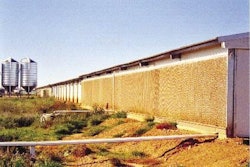Japan fears that the latest outbreaks of highly pathogenic H5N1 avian influenza (AI) in chickens in southern Miyazaki and Okayama were caused by rodents infected by wild migratory ducks from China.
Sequencing of RNA nucleotides in the eight genes showed that the strain infecting poultry at Kiyotake in Miyazaki prefecture were essentially identical (99.00 percent match) to a strain identified in China during 2005.
Government scientists inspected the infected farms and reported nets and coverings sufficient to exclude large migratory birds, but not small rodents such as rats and mice. At three farms, scores of dead chickens were in areas furthest from coop entrances, suggesting wild birds were not the direct source of infection.
Leading the team was Professor Toshihiro Ito of Tottori University who told national newspaper Ashi Shimbun, “It is possible that small rodents such as rats carried the virus into the chicken coops”. If confirmed, it will be practically impossible for Japanese farmers to avoid future outbreaks if the virus is re-introduced on migratory wildfowl.
Rats and wild waterfowl mix freely around ponds, lakes, rivers and farm reservoirs. Brown rats (Rattus norvegicus) burrow into river banks and are proficient swimmers and black rats (R. rattus) are good climbers, thus exploiting a range of routes into poultry houses. Mice (Mus spp.) present a particular threat with their extremely small body dimensions allowing entry through holes as small as six millimetres.
Laboratory research shows H5N1 viruses are pathogenic for mice. One H5N1 isolate from the 1997 Hong Kong outbreak showed high titres of virus in the lungs of infected mice and killed all those inoculated. Chicken isolates of H5N1 replicate to higher titres in rats than do H5N1 virus strains from other sources.

















